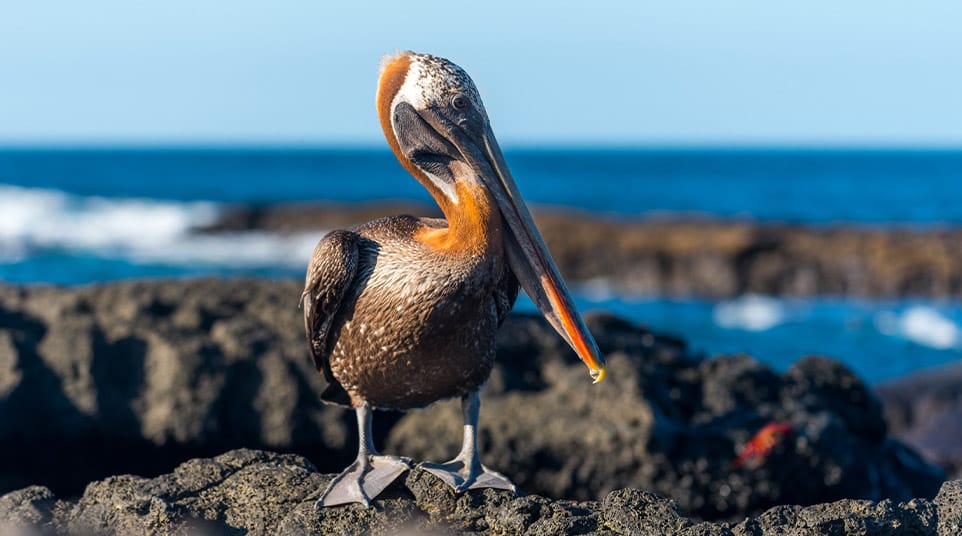- Home >
- Travel Guide >
- Galapagos Islands >
- Animals & Wildlife >
- Brown Pelican
Galapagos Brown Pelican Facts
Name: Brown Pelican
Family: Pelecanidae
Scientific name: Pelecanus occidentalis
Length: 100 to 152 cm (3 ft. 3 in to 5 ft.) wingspan 2.03 to 2.28 m (6 ft. 8 in to 7 ft. 6 in)
Weight: 7-11 lbs.
Wingspan: 203 - 228 cm (80 - 89 in)
Category: Sea Birds
Number of Species: 47
Endemic Species: 13
In total, 47 species of sea birds have been recorded in the Galapagos, 19 of which are resident to the Islands. The sea birds therefore account for nearly one third of all the species ever recorded in the islands and about the same proportion of the resident species.
Seabirds can be conveniently divided into 12 groups, as show in the table below. This shows the number of species recorded in each group and summarizes their status. If also shows the number of endemic species and the number of other species which are represented by endemic subspecies. Species are treated as migrants if they occur annually, vagrants being those recorded less frequently.
General Description:
Pelicans are large, heavy water birds with short legs, webbed feet and exceptionally long bills. The bill has a large, distensible pouch which is used as a scoop-net to catch fish. In flight, pelicans hold their head and neck drawn back and have slow, rather ponderous wing beats; they are, however, accomplished gliders. Pelicans are very ungainly on land, rarely walking far. The sexes are alike.
The Brown Pelican is a common resident of Galapagos; endemic subspecies urinator. Population estimated at a few thousand pairs and it breeds throughout the year, nesting in small colonies in low bushes and mangroves, occasionally on the ground.
Identification:
Unmistakable, due to its very large size and long, characteristic bill. ADULT: Sexes are alike, although females are generally slightly smaller than males. Plumage mainly gray-brown, with chestnut and white markings on head and neck. IMMATURE: Resembles adult but lacks head and neck markings and has pale under parts.
Voice:
Adults usually silent; young birds on the nest hiss and clap bill.
Behavior:
Often feeds by plunge-diving from the air, usually close inshore. They are accomplished fliers, regularly seen soaring on thermals. Often fly to or from feeding grounds in orderly rows, with birds flapping and gliding almost in unison.

